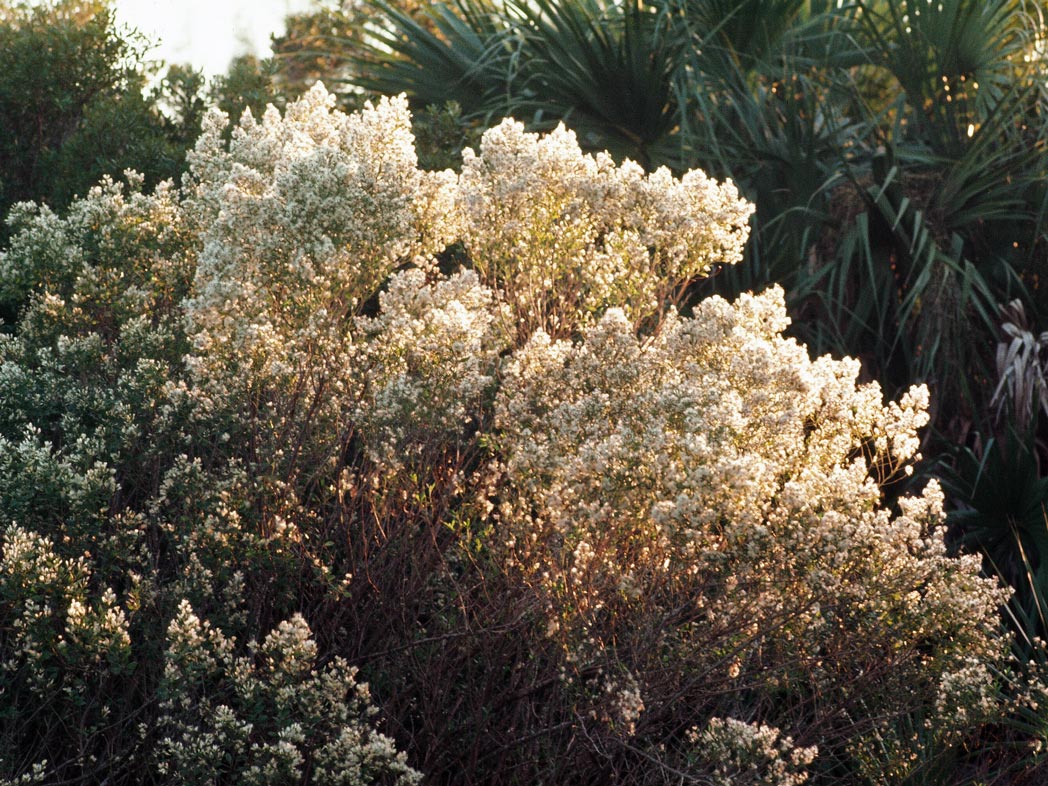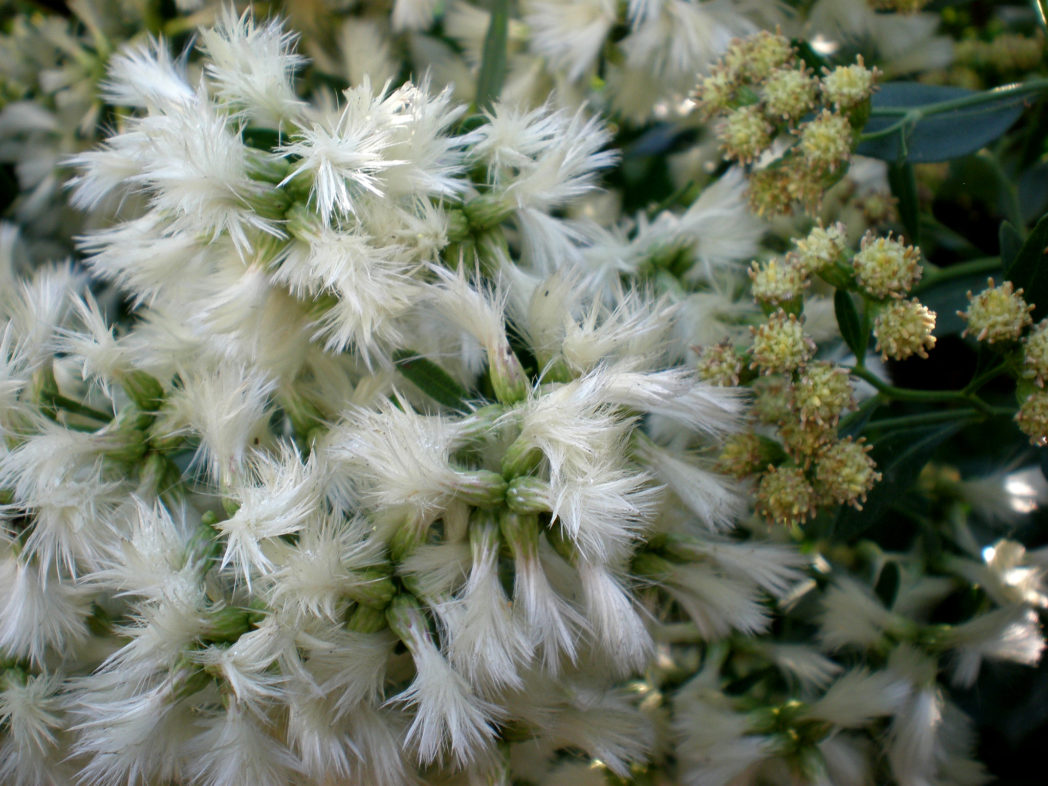Saltbush
Pictured above: Saltbush (Baccharis halimifolia) by Consultaplantas (CC BY-SA 4.0). Click on terms for botanical definitions. View as a PDF
Also known as groundsel tree and sea myrtle, saltbush is a long-lived perennial shrub. Its profuse flowers resemble tiny, silvery-white paint brushes. They occur in dense, terminal clusters. Its thick, grayish-green leaves are ovobate to rhomboid with toothed margins. They are alternately arranged. This densely branched shrub is an evergreen in the southern part of the state, but can be deciduous in northern Florida.

Saltbush typically blooms in fall. It occurs naturally in coastal uplands and dunes, along pond margins, and in ditches and disturbed areas. Its abundant nectar attracts a variety of pollinators, especially monarch butterflies. Birds and other wildlife eat its seeds (although they are toxic to humans).
Family: Asteraceae (daisy or composite family)
Native range: Throughout Florida
To see where natural populations of saltbush have been vouchered, visit florida.plantatlas.usf.edu.
Hardiness: Zones 8–11
Soil: Moist to dry, well-drained soils
Exposure: Full sun to minimal shade
Growth habit: 6-12′ tall and up to 5+’ wide
Propagation: Seed, cuttings
Garden tips: Saltbush can make a nice buffer or screen. It is fairly salt and drought tolerant. Saltbush is dioecious, so both male and female plants are needed for seed production. Seeds are easily distributed via wind, thus it can spread and become weedy. For this reason, male plants are often preferred for use in the home landscape.
Saltbush plants are often available at nurseries that specialize in native plants. Visit PlantRealFlorida.org to find a native nursery on your area.

